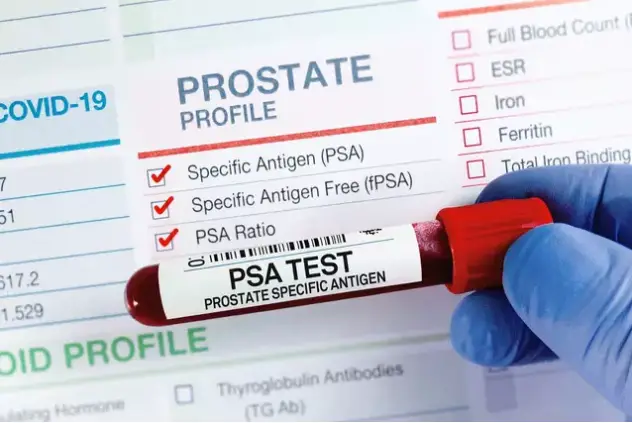
HT13. Risk of prostate cancer increases by 45% in men due to a common practice
Prostate cancer remains one of the most commonly diagnosed cancers among men, particularly those over the age of 50. According to the American Cancer Society, about 1 in 8 men will be diagnosed with prostate cancer during their lifetime, making it the second-leading cause of cancer death in men, behind only lung cancer. However, medical experts emphasize that early detection through regular screening can substantially improve outcomes and reduce mortality rates.
Understanding Prostate Cancer and Its Early Signs
Prostate cancer originates in the prostate gland—a small walnut-shaped organ that produces seminal fluid. In its early stages, prostate cancer often progresses without noticeable symptoms. This silent progression underscores the importance of early screening.
While changes in urinary patterns—such as difficulty urinating, frequent urination at night, or a weak stream—may occur, these symptoms are not exclusive to prostate cancer. They can also indicate benign prostatic hyperplasia (BPH), a non-cancerous enlargement of the prostate, or other urinary tract issues. The Centers for Disease Control and Prevention (CDC) advises men to consult a healthcare professional for accurate diagnosis if they experience any of these signs.

The Role of PSA Testing in Early Detection
Prostate-specific antigen (PSA) testing is a widely used method to screen for prostate cancer. This blood test measures the level of PSA, a substance made by the prostate. Elevated PSA levels may indicate the presence of prostate cancer, though other conditions such as prostatitis or BPH can also increase PSA levels.
The U.S. Preventive Services Task Force (USPSTF) recommends that men aged 55 to 69 discuss the potential benefits and risks of PSA screening with their healthcare provider. For men aged 70 and older, routine PSA screening is generally not recommended unless symptoms are present or risk factors are significant.

Evidence Supporting Regular Screening
A major research initiative known as the European Randomised Study of Screening for Prostate Cancer (ERSPC) provides compelling data supporting the effectiveness of early screening. Conducted over two decades and involving over 160,000 men across seven European countries, the ERSPC found that PSA-based screening can reduce deaths from prostate cancer by approximately 20%.
One segment of the ERSPC, led by scientists at the Erasmus MC Cancer Institute at the University Medical Centre Rotterdam, focused on 72,460 men and explored the long-term outcomes of those who underwent regular screenings versus those who did not. The study discovered that:
- Men who consistently attended their scheduled screenings had a 23% lower risk of dying from prostate cancer compared to those who skipped them.
- Approximately one in six men missed their routine screening appointments entirely.
- Men who skipped screenings were more likely to avoid other forms of preventive care, according to the study’s lead author, Dr. Renée Leenen, M.D., Ph.D.
“These findings suggest a pattern of care avoidance that could put individuals at a higher risk not only for prostate cancer but also for other preventable health conditions,” Dr. Leenen explained. “Understanding the barriers that discourage men from attending screenings is crucial to public health efforts.”

Factors Influencing Screening Participation
Several factors can influence whether a man chooses to undergo prostate cancer screening. These may include:
- Lack of awareness about the importance of early detection.
- Misconceptions about the screening process.
- Fear of diagnosis or medical procedures.
- Limited access to healthcare services, particularly in underserved communities.
Healthcare professionals and public health advocates emphasize the need to increase education and accessibility to prostate cancer screenings. According to the National Cancer Institute, informed decision-making and doctor-patient communication play a critical role in improving screening rates.

Addressing Disparities in Prostate Cancer Outcomes
Disparities in prostate cancer diagnosis and outcomes persist across different demographic groups. For example, Black men in the United States are more likely to develop prostate cancer and nearly twice as likely to die from it compared to white men, according to the American Cancer Society. The reasons for this include a combination of genetic, environmental, and socioeconomic factors.
Increasing screening rates in high-risk populations through targeted awareness campaigns and healthcare access improvements could significantly reduce these disparities. The Prostate Conditions Education Council (PCEC) and other advocacy groups frequently host community-based screening events to reach men who might otherwise go untested.
The Cost of Late Detection
Delaying or avoiding prostate cancer screening can lead to diagnoses at more advanced stages when the disease is harder to treat and less responsive to standard therapies. Treatments for late-stage prostate cancer may include surgery, radiation therapy, hormone therapy, and chemotherapy, often with higher costs and more significant side effects than treatment for early-stage disease.
In contrast, early-stage prostate cancer detected through screening is often localized and can be managed with less aggressive treatments, including active surveillance, which involves closely monitoring the condition without immediate intervention.

The Importance of Education and Advocacy
Raising awareness about the benefits of early prostate cancer detection and removing barriers to screening are vital steps in improving public health outcomes. Medical organizations and advocacy groups continue to work toward educating men about:
- The role of PSA testing.
- Recognizing risk factors, such as age, family history, and race.
- The importance of routine check-ups, even in the absence of symptoms.
Efforts such as Movember, a global movement focused on men’s health issues, including prostate cancer, play a critical role in spreading awareness and encouraging men to take charge of their health.
Final Thoughts: Take Action on Prostate Health
Prostate cancer is highly treatable when detected early. Regular screening, especially through PSA testing for those at risk, has been proven to reduce mortality. While not all prostate cancers require aggressive treatment, early diagnosis gives men and their healthcare providers more options and better control over the disease.
Men are encouraged to discuss their individual risk factors and screening options with their doctors. Public health experts continue to emphasize that avoiding regular screenings may increase the risk of late-stage cancer detection, which is more difficult to manage and associated with poorer outcomes.
By fostering a proactive approach to men’s health and expanding access to preventive care, communities can significantly reduce the burden of prostate cancer and improve long-term health outcomes for men worldwide.
Sources:
- American Cancer Society – Prostate Cancer
- Centers for Disease Control and Prevention (CDC) – Prostate Cancer
- U.S. Preventive Services Task Force – Prostate Cancer Screening
- European Randomised Study of Screening for Prostate Cancer (ERSPC)
- National Cancer Institute – Prostate Cancer
- Prostate Conditions Education Council
- Movember Foundation
